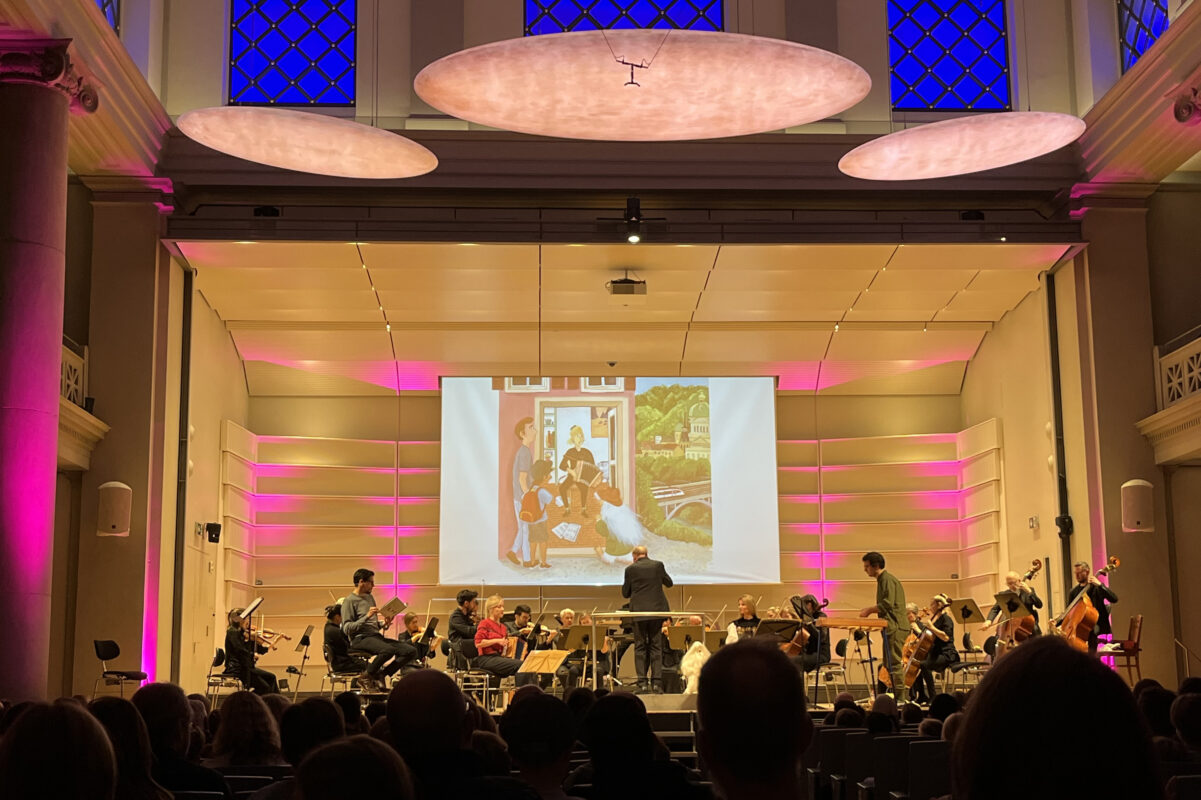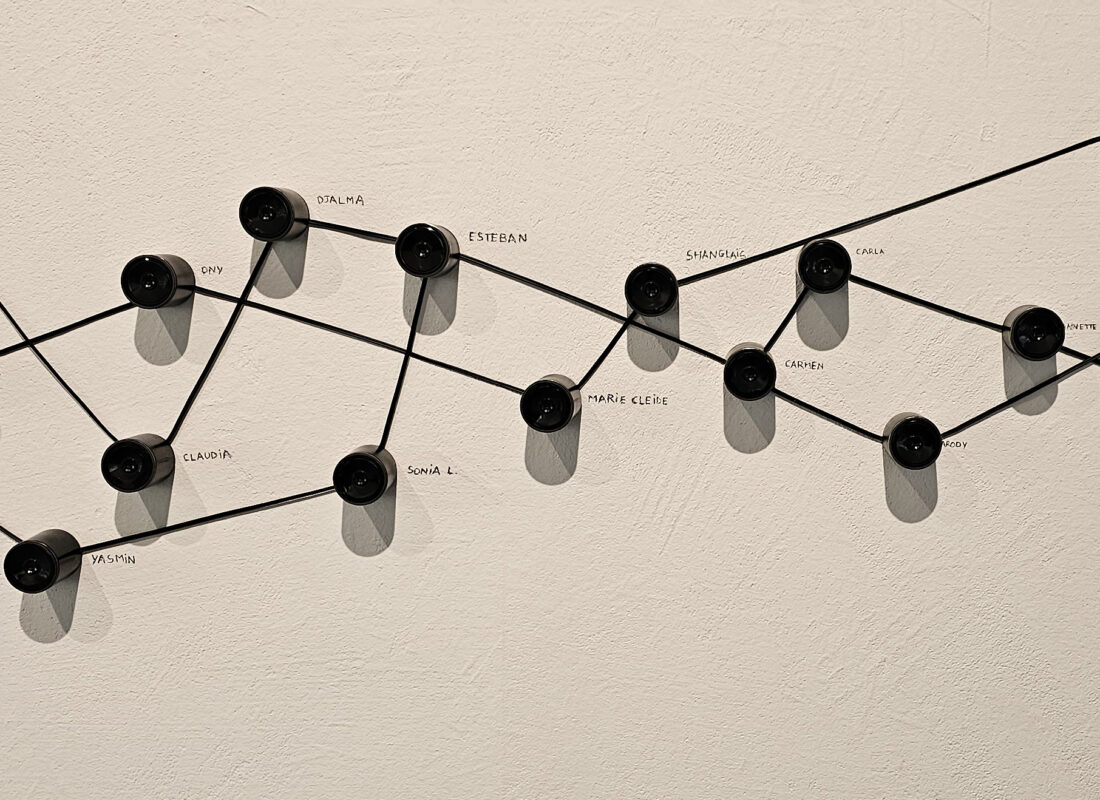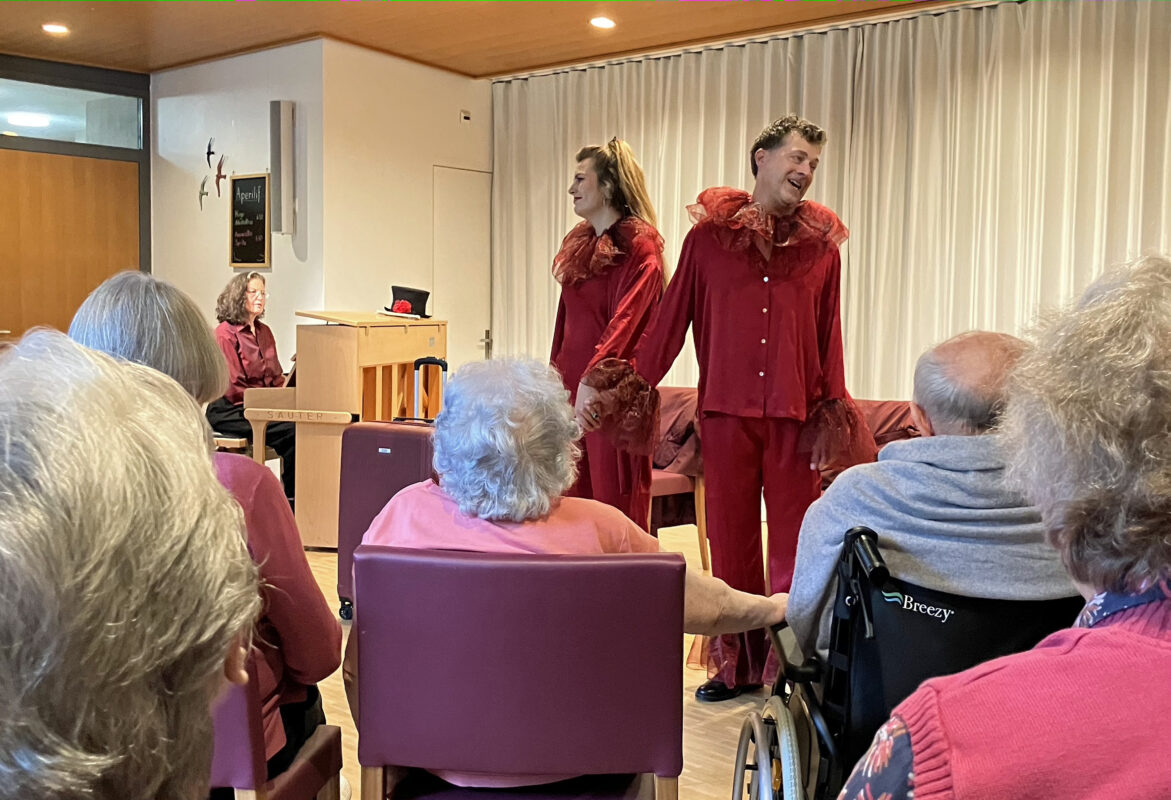The power of evil
The Spanish-Catalan artists' collective La Fura dels Baus combines Debussy's "La Damoiselle élue" with Honegger's dramatic oratorio. An evening well worth the journey.

While Arthur Honegger has just disappeared from our wallets (lucky the Swiss, who have been able to carry their artists on their banknotes for so long!), he is still on the program north of the Rhine - currently at the Frankfurt Opera with a brilliant production of his dramatic oratorio Joan of Arc au bûcher (1935). This is the third time, after 1949 and 1968, that this entirely solitary work has been staged in the Main metropolis. Of course, it is neither associated with nor proclaimed as a special performance tradition - and yet the work in the production by Àlex Ollé and his internationally successful Spanish-Catalan collective La Fura dels Baus can also be seen and heard as a reflection of reality (at least in parts of the world): power-political intrigues, show trials and the decline of a civil society once founded on solidarity.
Grandiose between the genres
Repeatedly misused ideologically over the last two centuries and still today, the myth-enshrouded Joan of Arc is a central figure of identification for French self-confidence: As a peasant girl, she gained the trust of the heir to the throne with her visions; under her fervent leadership, the English were driven from Orléans during the Hundred Years' War; she was captured through betrayal and ended up at the stake at the age of just 19 after a frame-up witch trial. There are no contemporary depictions of her, but the legend was later widely adapted in art and literature (Schiller, Brecht). In the field of musical art, only Honegger's score is on a comparable artistic level (works by Rossini, Verdi and Tchaikovsky seem rather marginal in comparison). Instead of a full-length, through-composed opera, Honegger, in close collaboration with his librettist, the poet Paul Claudel, created a composition that does not really fit into any established genre; the designation as a dramatic or scenic oratorio refers above all to the weighty tasks of the chorus and the speaking role of Joan of Arc, while in scenic terms much is more reminiscent of grand opera: stage-filling mass scenes and the play with different groups. This independence is also the lasting strength of the work, in which Honegger's original angular tone is combined with neoclassical counterpoint, cheekily taut jazz rhythms and old folk tunes.
Not an opera, not an oratorio and far more than just large-scale incidental music; Àlex Ollé took up the thread cast out by Claudel (a devout Catholic) and Honegger, who had a pessimistic view of the world, and took it further in his own way: centrally, the elevator serving as a ladder to heaven, on which Jeanne floats into the realm of infamy at the beginning, looking back; all around and in ever-changing constellations, the agitated, half-naked, beastly-behaving people and the rough-cut beasts of the Inquisition. The scene of the card game is just as impressive, opulent and apocalyptic in its dark, dirty, threatening imagery, which coagulates into a fascinating and terrifyingly visionary depiction of the power of evil.
Compiled cyclically with Debussy
The contrast to the pre-Impressionist Poème lyrique, set as a kind of heavenly prelude La Damoiselle élue (1893) by Claude Debussy could hardly be greater. While at first the Chosen One looks over the golden barrier of heaven in anticipation of her (still) earthly lover, at the end of the evening it is Joan of Arc who, through the power of faith and love, endures her flaming end and, carried by the voices of the saints, overcomes it. Even if Debussy's orchestration is subtle and the rarely performed cantata, in what is probably its first stage realization, takes a back seat to the power of the dramatic oratorio that follows, a cycle is also constructed musically - Honegger concludes the last scene not with an acoustic fireworks display, but with almost tenderly ascending chords.
The collective La Fura dels Baus, which staged the production as a cohesive team, earned the undivided applause of the premiere audience for these highly expressionistic images and the haunting density - but certainly also because it managed without any unmotivated empty spaces or brazen shockers in the almost two hours. In addition, the concept gave the choir (with extra choir), excellently directed by the stage director and musically rehearsed by Tilman Michael, enough space to develop; the children's choir, supervised by Markus Ehmann, also performed amazingly. Although Johanna Wokalek, well-known from theater and film, was at the center of the performance in the strong and authentic role of Joan of Arc, she shared the applause with all the other protagonists, including Sébastien Dutrieux (Brother Dominique) and Elizabeth Reiter with her warmly timbred soprano (as Damoiselle élue), in a sympathetic and collegial manner. Under the direction of Marc Soustrot, the Frankfurt Opera and Museum Orchestra was perfectly prepared and in top form. An evening worth a short trip.
Further performances on June 17, 23, 24, 28 and 30 as well as July 1, 2017
www.oper-frankfurt.de/de/spielplan/la-damoiselle-elue-/-jeanne-darc-au-bucher








